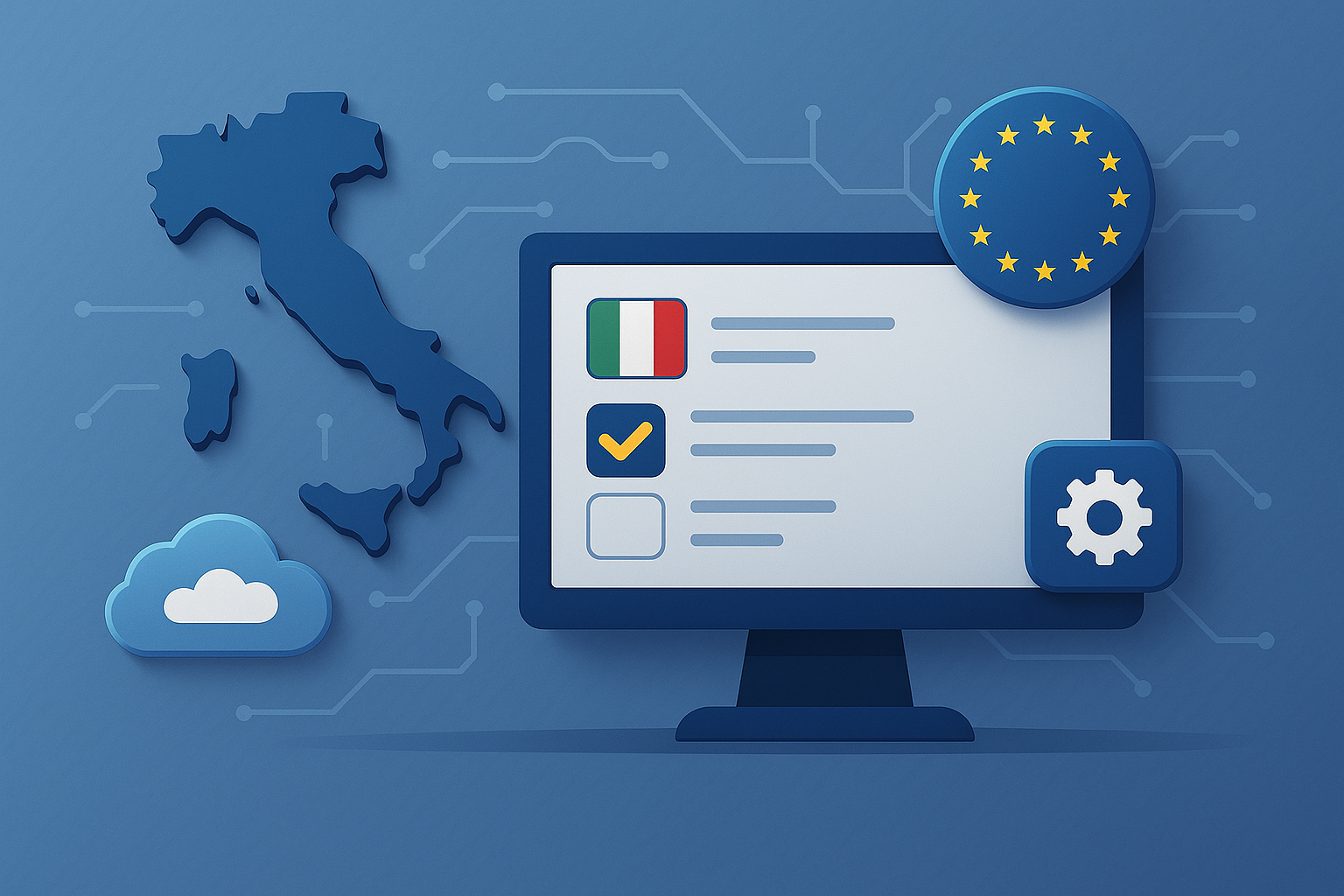
Introduction
In recent years, the concept of a Digital Agenda has become central to Italian and European public policies. The goal is clear: to use digital technologies to improve public services, promote transparency, increase competitiveness, and foster social inclusion.
Italy has made several advances, but many challenges remain. The digitalization of public administration, the spread of digital identity, internet access in rural areas, and citizens’ digital skills are still areas that need attention.
This article analyzes the current state of Italy’s Digital Agenda, the progress achieved, and the challenges ahead, with a look at future developments.
Origins of the Digital Agenda in Italy
Italy’s Digital Agenda was launched in 2012 as part of the broader Digital Agenda for Europe, aimed at creating a single digital market and reducing the technological gap between EU member states.
The first measures included:
- the development of PEC (Certified Email),
- the spread of digital signatures,
- the creation of open data portals,
- plans to digitalize administrative services.
However, initial progress was slowed by bureaucratic delays and poor coordination among institutions.
Current state: digital identity and online services
In recent years, several tools have represented a major step forward:
- SPID (Public System of Digital Identity): now used by millions of citizens to access online services from public and private organizations.
- CIE (Electronic Identity Card): increasingly widespread as a digital identification tool.
- PagoPA: the official platform for digital payments to public administrations.
- IO App: the official app that brings together the main public digital services in one place.
These tools have made it easier to access services, increasing citizens’ trust in digitalization.
Challenges ahead
Despite progress, several challenges remain:
- Territorial digital divide: many rural and peripheral areas still suffer from limited connectivity, slowing access to digital services. Initiatives like the Italy 1 Giga Plan aim to close this gap.
- Digital skills: according to the DESI – Digital Economy and Society Index, a large part of the Italian population has insufficient basic digital skills.
- System integration: not all public services are uniformly integrated. Some local authorities use separate platforms, making access difficult for users.
- Trust and security: data protection is crucial, as seen in GDPR and participatory processes: what to know. The perception of insecurity can discourage the use of digital platforms, despite the efforts of the National Cybersecurity Agency.
The role of European institutions
Italy’s Digital Agenda is part of a broader European framework for digital citizenship (European policies for digital citizenship).
The European Commission promotes initiatives such as:
- the Digital Compass 2030, with goals for connectivity, digital skills, and online public services;
- funding programs like the Digital Europe Programme;
- common standards for digital identity and cybersecurity.
Best practices and local experiments
Alongside national initiatives, some Italian cities have launched innovative projects:
- Milan has developed digital platforms for civic participation and urban services, often in collaboration with Fondazione Cariplo.
- Bologna has experimented with online participatory budgeting processes, in line with international experiences such as Decide Madrid.
- Turin has focused on smart mobility and the integration of open data to improve services for citizens.
These experiences demonstrate how the Digital Agenda can translate into concrete practices that bring institutions closer to citizens.
Digital democracy and the Digital Agenda
Digitalization is not only about administrative services but also about democratic participation.
As discussed in How to choose the right platform for your community, choosing the right tools is crucial to ensuring inclusion and transparency.
The link between the Digital Agenda and digital democracy is strengthened whenever citizens can not only access a service but also contribute to improving it through feedback, consultations, and online deliberative processes.
Reflections for Concorder
In this context, projects like Concorder can play a strategic role by:
- integrating participatory functions into public digital systems,
- ensuring data security and traceability,
- offering moderation tools and automatic proposal synthesis.
Concorder could become a natural complement to Italy’s Digital Agenda, transforming digitalization not only into an administrative process but also into a pathway of inclusive participation.
Conclusion
Italy has made important progress in implementing its Digital Agenda, but challenges remain regarding infrastructure, skills, and trust.
The challenge for the coming years will be to ensure that digitalization is not limited to speeding up services but becomes a true tool of digital citizenship.
To achieve this, continued investment in infrastructure, training, and transparency will be needed, engaging citizens actively and not just as passive users.


